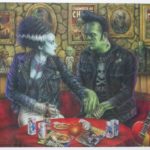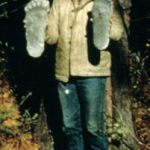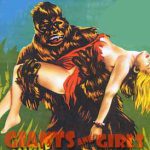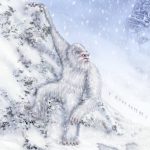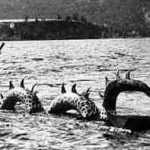Wildmen stories are found among the indigenous population of the Pacific Northwest. The legends existed prior to a single name for the creature. They were known as ts’emekwes (Lummi) stiyaha, kwi-kwiyai or skoocooms.
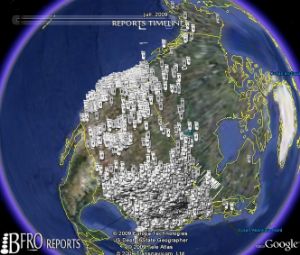 The local legends were combined together by J. W. Burns in a series of Canadian newspaper articles in the 1920s. Each language had its own name for the local version. Burns coined the term Sasquatch, which is from the Halkomelem sásq’ets and used it in his articles to describe a hypothetical single type of creature reflected in these various stories. Burns’s articles popularized both the legend and its new name, making it well known in western Canada before it gained popularity in the United States.
The local legends were combined together by J. W. Burns in a series of Canadian newspaper articles in the 1920s. Each language had its own name for the local version. Burns coined the term Sasquatch, which is from the Halkomelem sásq’ets and used it in his articles to describe a hypothetical single type of creature reflected in these various stories. Burns’s articles popularized both the legend and its new name, making it well known in western Canada before it gained popularity in the United States.
The oldest written account of Bigfoot on record occurred in 986 A.D. by Leif Erikson and his men. During their first landing in the new world, the Norsemen wrote about monsters that were horribly ugly, hairy and swarthy.
One of the earliest published reports of Bigfoot was in a California newspaper, the Antiloch Ledger, during 1870. He reported the sighting of a gorilla or wildman in the bush. He also noted that the head seemed to be set closely on its shoulders, without a neck. However, it also goes on to say that it had relatively short legs, and therefore could have been a chimpanzee or another monkey.
Thousands of notable sightings occurred throughout the 20th century, with witnesses coming forward to newspapers throughout.
Stories ranged from stumbling upon the enormous footprints to being abducted or attacked by the creatures. About a third of all Bigfoot sightings are concentrated in the Pacific Northwest, with most of the remaining sightings spread throughout the rest of North America.
Some Bigfoot advocates, such as cryptozoologist John Willison Green, have postulated that Bigfoot is a worldwide phenomenon.
The most notable sightings include:
- 1924: Fred Beck claimed that he and four other miners were attacked one night in July 1924, by several "apemen" throwing rocks at their cabin in an area later called Ape Canyon. Beck claimed the miners shot and possibly killed at least one of the creatures, precipitating an attack on their cabin, during which the creatures bombarded the cabin with rocks and tried to break-in. The incident was widely reported at the time. Beck wrote a book about the event in 1967, in which he argued that the alleged creatures were mystical beings from another dimension, claiming that he had experienced psychic premonitions and visions his entire life of which the apemen were only one component. Speleologist William Halliday argued in 1983 that the story arose from an incident in which hikers from a nearby camp had thrown rocks into the canyon. There are also local rumors that pranksters harassed the men and planted faked footprints.
- 1941: Jeannie Chapman and her children claimed to have escaped their home when a large Sasquatch, allegedly 7.5 feet (2.3 m) tall, approached their residence in Ruby Creek, British Columbia.
- 1958: Bulldozer operator Jerry Crew took to a newspaper office a cast of one of the enormous footprints he and other workers had been seeing at an isolated work site at Bluff Creek, California. The crew was overseen by Wilbur L. Wallace, brother of Raymond L. Wallace. After Ray Wallace’s death, his children came forward with a pair of 16-inch (41 cm) wooden feet, which they claimed their father had used to fake the Bigfoot tracks in 1958. Wallace is poorly regarded by many Bigfoot proponents. John Napier wrote, "I do not feel impressed with Mr. Wallace’s story" regarding having over 15,000 feet (4,600 m) of film showing Bigfoot.
- 1967: Roger Patterson and Robert Gimlin reported that on October 20 they had captured a purported Sasquatch on film at Bluff Creek, California. This came to be known as the Patterson-Gimlin film, which is purported to be the best evidence of Bigfoot by many advocates.[citation needed] Many years later, Bob Heironimus, an acquaintance of Patterson’s, claimed that he had worn an ape costume for the making of the film.

